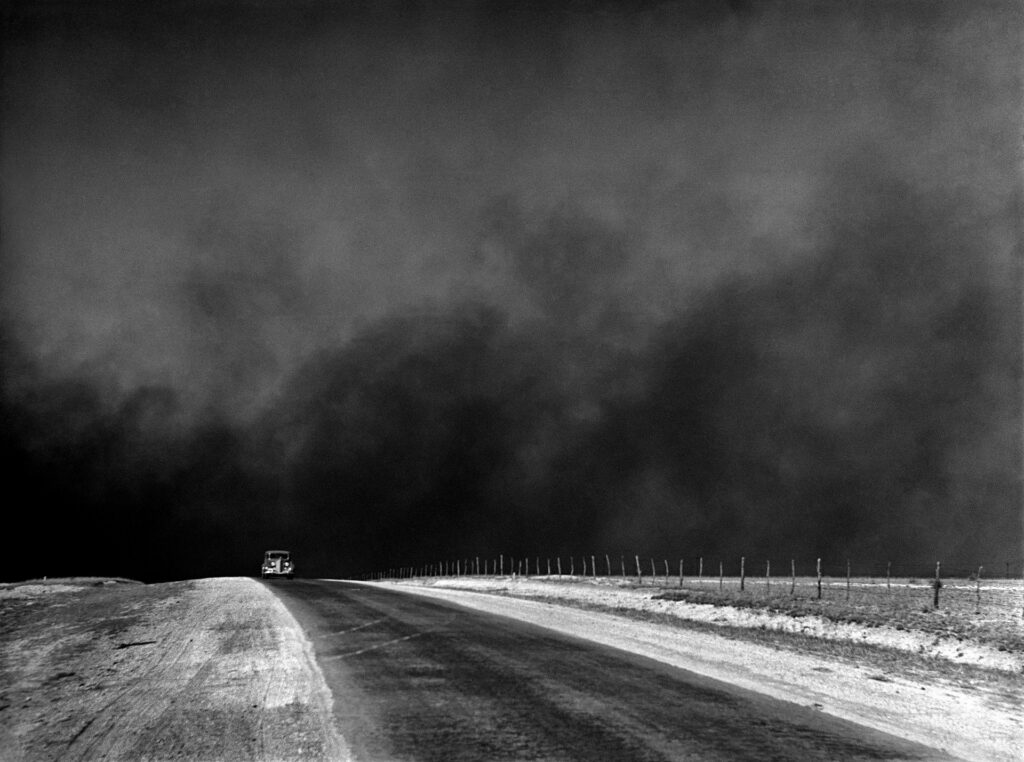A new study says we should get ready for a blast from the past — in all the wrong ways. According to its findings, America’s Great Plains risk turning back into the dustbowl of the 1930s.

The Great Plains area has become increasingly dry in the past 20 decades, the authors explain, with dust storms here becoming more common and more powerful over the same time. Such events are considerable health hazards, and threaten to decrease the area’s agricultural potential as they strip nutrients from soils.
Bad Lands
“Our results suggest a tipping point is approaching, where the conditions of the 1930s could return,” says lead author Gannet Haller, an atmospheric scientist at the University of Utah.
The main drivers of these changes are the expansion of agriculture and irrigation in the area alongside more common and intense droughts.
Andrew Lambert, a co-author on the study and a meteorologist at the U.S. Naval Research Laboratory in Monterey, California stumbled upon these findings while reviewing atmospheric haze data gathered by NASA satellites (such haze is caused by dust and smoke particles in the atmosphere). The team then confirmed these with records from local dust sensors over the last 20 years.
All in all, the team explains that there is two times as much dust being blown over the Great Plains as 20 years ago. Dust levels peak during spring and fall — planting and harvesting seasons — which point to the agricultural activity being a leading cause. Such dust depletes soils and contains ultrafine particles that can enter our bodies and cause lung and heart diseases.
The Dust Bowl of the 1930s was likely caused by a combination of climate and agricultural drivers, the team explains. These draw their roots in the massive expansion of farmland in the area in the 1920s as mechanization allowed farmers to work more land than ever before. An extended drought in the following decade (with record-breaking heatwaves in 1934 and 1936), dried the plains out completely.
Climate change is also drying out the area and is likely to make heat waves much more common and intense occurrences, potentially leading to a megadrought worse than anything in the last 1000 years. New farmland in the area — most of it aimed at producing corn for biofuel refineries — is amplifying the problem. The study found a strong correlation between new cropland and downwind areas where dust levels are growing the fastest.
“Much of the [recent agricultural] expansion has been on less suitable land,” Lambert says. “It’s particularly ironic that the biofuel commitments were meant to help the environment.”
Lambert is particularly worried that the same feedback loops that created the dust bowl may be forming again. Wind-borne dust can lead to crop losses by removing nutrients from the soil. This then prompts farmers to plow more terrain, which restarts the cycle.
The worry is the potential for a repeat of the 1930s feedback loops, where the wind-borne dust carried away vital nutrients from the soil, leading to crop losses and the need to plow up more terrain—thereby removing stabilizing ground cover and adding to the supply of dust. The fact that local weather and precipitation patterns are likely to shift due to climate change could also contribute to the issue. It also makes it harder for us to estimate exactly how the situation will evolve.
The paper “Dust Impacts of Rapid Agricultural Expansion on the Great Plains” has been published in the journal Geophysical Research Letters.









